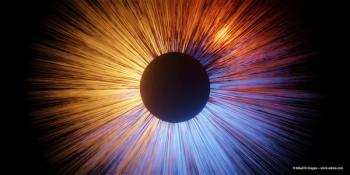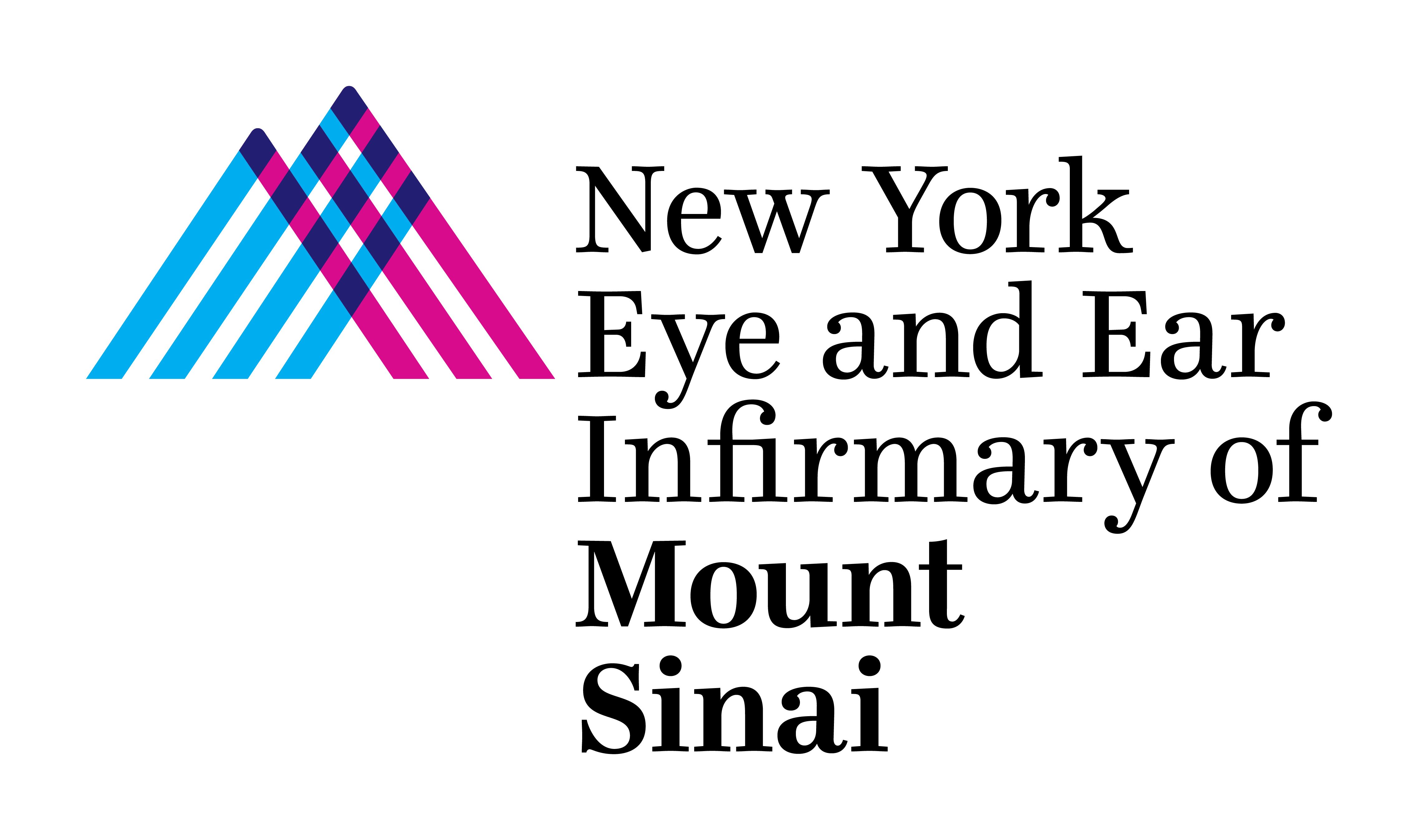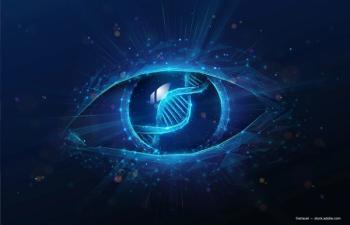
- Ophthalmology Times: May/June 2025
- Volume 50
- Issue 3
Artificial intelligence enhances detection of neuro-ophthalmic disorders

Key Takeaways
- The deep learning system distinguishes IIH, NAION, and healthy eyes with 93.6% accuracy, aiding in resource-limited settings.
- The model reduces the need for invasive procedures by using a single fundus photograph to identify optic disc swelling.
Deep learning discerns IIH, NAION, and normal eyes using single fundus image.
We developed a deep learning (DL) system that accurately differentiates optic disc swelling caused by idiopathic intracranial hypertension (IIH) from that of nonarteritic anterior ischemic optic neuropathy (NAION), as well as from healthy eyes, with an externally validated accuracy of 93.6%. Our findings, recently accepted by the American Journal of Ophthalmology1, are especially valuable in emergency departments and underresourced settings where specialists such as neuro-ophthalmologists are unavailable, or where clinicians are not comfortable interpreting fundus photographs.
Clinical importance in resource-limited settings
The model distinguishes IIH, NAION, and healthy eyes using only a single fundus photograph, so it can help health care providers avoid invasive procedures such as lumbar punctures or costly imaging. It also identifies NAION with high accuracy, despite there being no definitive test for NAION and the fact that diagnosis typically hinges on clinical assessment. By accurately recognizing IIH, NAION, or healthy eyes from a single image, this tool bridges a critical gap in timely and accurate neuro-ophthalmic diagnoses.
IIH and NAION both present with optic disc swelling, which can blur the disc margins and lead to visual impairment.2,3 Although the swelling may appear similar in both conditions, the underlying mechanisms are distinct. IIH is linked to increased intracranial pressure without an identifiable structural cause. This condition is most commonly observed in young women with obesity, though it can also affect men and individuals from other demographic groups. NAION is optic nerve head swelling of an unknown etiology, leading to sudden, painless visual loss for which there is currently no treatment. This usually affects older adults, although there can be exceptions. Although neuro-ophthalmologists can often distinguish between these conditions, their subtle differences can cause confusion, especially for nonspecialists or busy clinicians who rarely see such patients.4
DL has quickly become an important tool in ophthalmology. Researchers have already applied DL techniques to identify diabetic retinopathy, glaucoma, and age-related macular degeneration in fundus photographs. Building on these successes, we and others have used DL to assess the severity of optic disc edema in neuro-ophthalmic disorders.5-17 These achievements, combined with the widespread availability and cost of fundus cameras, suggest that automated image analysis can significantly improve diagnostic efficiency, even in urgent or resource-limited settings.
Model training, validation, and performance
We compiled more than 15,000 fundus photographs of the 3 categories. The IIH images were primarily drawn from a multicenter clinical trial18 and supplemented with real-world photographs of mild and severe IIH from several neuro-ophthalmology clinics. All photographs showed a Frisén grade of 1 or higher. The NAION photographs came from a large, prospective study of acute NAION19, supplemented with acute cases from multiple neuro-ophthalmology clinics. In addition, we collected healthy-eye images from healthy fellow eyes in the trials, clinics, and various public databases.20,21 These datasets spanned different imaging devices and resolutions to make the model more robust.
We excluded images that were too blurry or improperly exposed, or in which the optic disc was not centered. This filtering process prevented the system from picking up extraneous artifacts and forced it to focus on the optic disc and peripapillary retina.
We fine-tuned a ResNet-50 architecture initially trained on millions of natural images.22 After random rotations, translations, and color transformations, each fundus image was normalized and cropped so the optic disc was at the center. This approach reduced the chance that the model would memorize unique features from duplicate images of the same eye. We then evaluated the final model on an external dataset of more than 1100 previously unseen images—featuring new patients, varying demographics, and different cameras—to assess its ability to generalize to novel data.
On the internal validation sets, our model achieved an accuracy of 96.2%, with precision, recall, and F1 scores similarly high for IIH, NAION, and healthy eyes. In our external validation set, we reached 93.6% accuracy with F1 scores ranging from 0.90 – 0.95 and a macro-average area under the curve-receiver operating characteristic of 0.980 (Figure 1).1
One interesting aspect of our research was the use of heat maps, or areas within an image that the model highlights as important for determining the final diagnosis. In many photographs with IIH, the system appeared to focus on the inferior portion of the optic disc, which aligns with previous reports that inferior peripapillary nerve fiber layers are often thickened in papilledema. In NAION, the superior part of the disc was frequently emphasized, consistent with the common inferior hemifield visual defect observed in this disease.
With healthy eyes, the activations were often more uniform across the entire disc(Figure 2).1 This distinction is important because the underlying cause of NAION remains unknown, and identifying consistently emphasized regions may help guide future research toward understanding the disease’s mechanisms and affected structures.
We believe our findings are especially relevant for emergency departments and remote clinics that may not have immediate access to neuro-ophthalmologists. Many providers may not feel comfortable capturing and interpreting fundus photographs. Our DL tool can support clinicians by quickly evaluating whether disc swelling aligns with papilledema, appears normal, or suggests the possibility of NAION in uncertain cases. This can reduce unnecessary referrals and potentially avoid some imaging tests or procedures if the system indicates that the optic disc appears normal. That does not replace expert evaluation, but it can serve as a triage tool.
Although we have confidence in the system’s performance, we do not advocate relying on a DL prediction alone to make definitive clinical decisions. Our approach is designed to complement clinical judgment. A single fundus photograph can miss certain pathologies. The best practice remains to combine findings with other imaging, labs, and a careful clinical history.
Conclusion
Our DL system offers a promising solution for differentiating papilledema from NAION and healthy eyes using a single fundus photograph. The level of accuracy and consistency across different datasets suggests that it can provide valuable support in a variety of clinical environments. We see potential applications ranging from emergency triage to routine follow-up visits, especially in places where ophthalmic care is limited. As we further develop and validate this model, we hope it will serve as a practical resource for many health care providers, promoting timely recognition of disc swelling and improving patient care.
David Szanto, BA
Szanto is a fourth-year medical student at the Renaissance School of Medicine at Stony Brook University in New York. He is currently completing a dedicated research year with the Department of Ophthalmology, Icahn School of Medicine at Mount Sinai, New York. His work focuses on the intersection of artificial intelligence and neuro-ophthalmology.
Mona Garvin, PhD
Garvin is affiliated with the Center for the Prevention and Treatment of Visual Loss, Iowa City VA Health System, Iowa City, Iowa; Department of Electrical and Computer Engineering, University of Iowa, Iowa City, Iowa; and Department of Ophthalmology and Visual Sciences, University of Iowa, Iowa City, Iowa.
Brian Woods, MBBCh
Woods is affiliated with the Irish Clinical Academic Training Programme, Department of Ophthalmology, University Hospital Galway, Ireland; and the Physics Department, School of Natural Sciences, University of Galway, Ireland.
Jui-Kai Wang, PhD
Wang is affiliated with the Department of Ophthalmology, University of Texas Southwestern Medical Center in Dallas, Texas.
Asala Erekat, PhD
Erekat is a data scientist with the Department
of Neurology, Icahn School of Medicine at Mount Sinai, New York.
Brett A. Johnson, PhD
Johnson is affiliated with the Department of Ophthalmology and Visual Sciences, University of Iowa, Iowa City, Iowa.
Edward Linton, MD
Linton is affiliated with the Department of Ophthalmology, University of Texas Southwestern Medical Center, Dallas, Texas; and University of Iowa Hospitals and Clinics, Iowa City.
Mark J. Kupersmith, MD
Kupersmith is a professor of neurology and ophthalmology with the Department of Ophthalmology, Icahn School of Medicine at Mount Sinai, New York.
The authors have no financial disclosures.
References
Szanto D, Erekat A, Woods B, et al. Deep learning approach readily differentiates papilledema, non-arteritic anterior ischemic optic neuropathy, and healthy eyes. Am J Ophthalmol. Published online April 11, 2025. doi:10.1016/j.ajo.2025.04.006
Walsh FB, Hoyt WF. Clinical Neuro-Ophthalmology. Williams and Wilkins Company; 1969:567-607.
Hayreh SS. Anterior ischaemic optic neuropathy: I. terminology and pathogenesis. Br J Ophthalmol. 1974;58(12):955-963. doi:10.1136/bjo.58.12.955
Raizada K, Margolin E. Non-arteritic anterior ischemic optic neuropathy. In: StatPearls. StatPearls Publishing; 2022. Accessed May 16, 2025.
Raman R, Srinivasan S, Virmani S, Sivaprasad S, Rao C, Rajalakshmi R. Fundus photograph-based deep learning algorithms in detecting diabetic retinopathy. Eye (Lond). 2019;33(1):97-109. doi:10.1038/s41433-018-0269-y
Sahlsten J, Jaskari J, Kivinen J, et al. Deep learning fundus image analysis for diabetic retinopathy and macular edema grading. Sci Rep. 2019;9(1):10750. doi:10.1038/s41598-019-47181-w
Oh K, Kang HM, Leem D, Lee H, Seo KY, Yoon S. Early detection of diabetic retinopathy based on deep learning and ultra-wide-field fundus images. Sci Rep. 2021;11(1):1897. doi:10.1038/s41598-021-81539-3
Gurudath N, Celenk M, Riley HB. Machine learning identification of diabetic retinopathy from fundus images. In: IEEE Signal Processing in Medicine and Biology Symposium; December 13, 2014; Philadelphia, PA. IEEE;2014:1-7. doi:10.1109/spmb.2014.7002949
Ahn JM, Kim S, Ahn KS, Cho SH, Lee KB, Kim US. A deep learning model for the detection of both advanced and early glaucoma using fundus photography. PLoS One. 2018;13(11):e0207982. doi:10.1371/journal.pone.0207982
Hemelings R, Elen B, Schuster AK, et al. A generalizable deep learning regression model for automated glaucoma screening from fundus images. NPJ Digit Med. 2023;6(1):112. doi:10.1038/s41746-023-00857-0
Ajitha S, Akkara JD, Judy MV. Identification of glaucoma from fundus images using deep learning techniques. Indian J Ophthalmol. 2021;69(10):2702-2709. doi:10.4103/ijo.IJO_92_21
Grassmann F, Mengelkamp J, Brandl C, et al. A deep learning algorithm for prediction of Age-Related Eye Disease Study Severity Scale for age-related macular degeneration from color fundus photography. Ophthalmology. 2018;125(9):1410-1420. doi:10.1016/j.ophtha.2018.02.037
Pead E, Megaw R, Cameron J, et al. Automated detection of age-related macular degeneration in color fundus photography: a systematic review. Surv Ophthalmol. 2019;64(4):498-511. doi:10.1016/j.survophthal.2019.02.003
Peng Y, Dharssi S, Chen Q, et al. DeepSeeNet: a deep learning model for automated classification of patient-based age-related macular degeneration severity from color fundus photographs. Ophthalmology. 2019;126(4):565-575. doi:10.1016/j.ophtha.2018.11.015
Burlina P, Freund DE, Joshi N, Wolfson Y, Bressler NM. Detection of age-related macular degeneration via deep learning. In: IEEE 13th International Symposium on Biomedical Imaging; April 13-16, 2016; Prague, Czech Republic. IEEE;2016:184-188. doi:10.1109/ISBI.2016.7493240
Branco J, Wang JK, Elze T, et al. Classifying and quantifying changes in papilloedema using machine learning. BMJ Neurol Open. 2024;6(1):e000503. doi:10.1136/bmjno-2023-000503
Milea D, Najjar RP, Zhubo J, et al; BONSAI Group. Artificial intelligence to detect papilledema from ocular fundus photographs. N Engl J Med. 2020;382(18):1687-1695. doi:10.1056/NEJMoa1917130
Wall M, Kupersmith MJ, Kieburtz KD, et al; NORDIC Idiopathic Intracranial Hypertension Study Group. The idiopathic intracranial hypertension treatment trial: clinical profile at baseline. JAMA Neurol. 2014;71(6):693-701. doi:10.1001/jamaneurol.2014.133
Kupersmith MJ, Miller NR. A nonarteritic anterior ischemic optic neuropathy clinical trial: an industry and NORDIC collaboration. J Neuroophthalmol. 2016;36(3):235-237. doi:10.1097/WNO.0000000000000409
Dugas E, Jared, Jorge, Cukierski W. Diabetic retinopathy detection. Kaggle. Published 2015. Accessed May 27, 2025. https://kaggle.com/competitions/diabetic-retinopathy-detection
Zhang Z, Yin FS, Liu J, et al. ORIGA(-light): an online retinal fundus image database for glaucoma analysis and research. Annu Int Conf IEEE Eng Med Biol Soc. 2010;2010:3065-3068. doi:10.1109/IEMBS.2010.5626137
He K, Zhang X, Ren S, Sun J. Deep residual learning for image recognition. In: IEEE Conference on Computer Vision and Pattern Recognition; June 27-30, 2016; Las Vegas, NV. IEEE; 2016:770-778. doi:10.1109/CVPR.2016.90
Articles in this issue
Newsletter
Don’t miss out—get Ophthalmology Times updates on the latest clinical advancements and expert interviews, straight to your inbox.








































